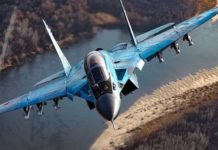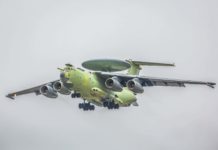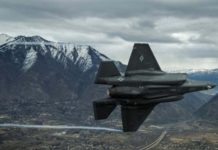When comparing the Gripen to other fighter jets that are available on the market, things look very positive for Saab, despite the difficulties finding clients. The jet can outcompete the Eurofighter for instance in a number of key areas.
Whilst there is never a perfect fighter and each will have its downsides, the Gripen’s lower price tag is not backed up with lesser performance. Whilst being nearly $40m cheaper than a Eurofighter the Gripen has a better range, higher speed, less weight and lower operating costs.
Currently the Eurofighter can provide a larger range of variant types to suit different operating roles, but ultimately the Gripen can carry all relevant NATO spec weapons, so countries are not lumbered with new weapon costs or retrofits.
Gripen’s overall cost of a fleet of 150 NG Gripens for more than 40 years is approximately $22bn. Which when compared to the F-35 that the USA and UK are purchasing is significantly cheaper at 48% of the cost of a fleet of 65 F-35As. So effectively a country could purchase a great deal more fighters and still save money over the F-35.
Ultimately unless the country is requiring some unique and staggeringly expensive stealth technology (which is the technological focus of the new breed of top fighters) then the Gripen is an extremely good package for the money compared to what else is available.
The Gripen NG includes some excellent technology advances
Gripen includes some unique tricks in order to maintain an advantage and keep the ability of the vehicle high, without compromising the intended low price point of the vehicle.
AESA radars have changed aerial combat, offering huge improvements in range, resolution, fast scanning capabilities, stealth and reliability for radar systems. But the system does have limitations in its rather narrow field of view. Saab has used a clever spinning ‘repositioner’ in the nose of the jet which allows the angle to be increased significantly.
This allows the Gripen the ability to take a shot from beyond visual range, and then turn 90 degrees in avoidance tactics, while still providing mid-course updates for the missile fired and keeping situational awareness high in mid combat.
With new missiles that have extreme ranges, like MBDA’s Meteor, a Gripen NG could fire at enemy fighters at extreme range and then effectively hide from enemy radar and infrared tracking systems used on other types of fighters, while still guiding its missiles.
This development, though relatively minor in cost, provides a major benefit to the new series of Gripens and is one of the ways that the Gripen can maintain relevancy when compared with its peers.
Current foreign customers are relatively small military powers with small orders
Whilst the specific selling point of the Gripen has been to capture western friendly nations that cannot afford more expensive machinery, part of the problem for the future is that these countries have a small demand for vehicles and update slowly and in limited orders.
Coupled with this the bidding process is expensive and fraught with difficulties, usually requiring numerous commitments from defense companies to secure loans for the country or to manufacture the vehicles in the country.
Despite some positive orders in the past it is difficult to see Saab raising more than 50-100 new aircraft sales from its existing friendly clients, which means that in order for Saab to meet its expected orders of 300 aircraft, it will have to find multiple new clients, that meet Sweden’s arms sales criteria.
Source: Airforce-technology









